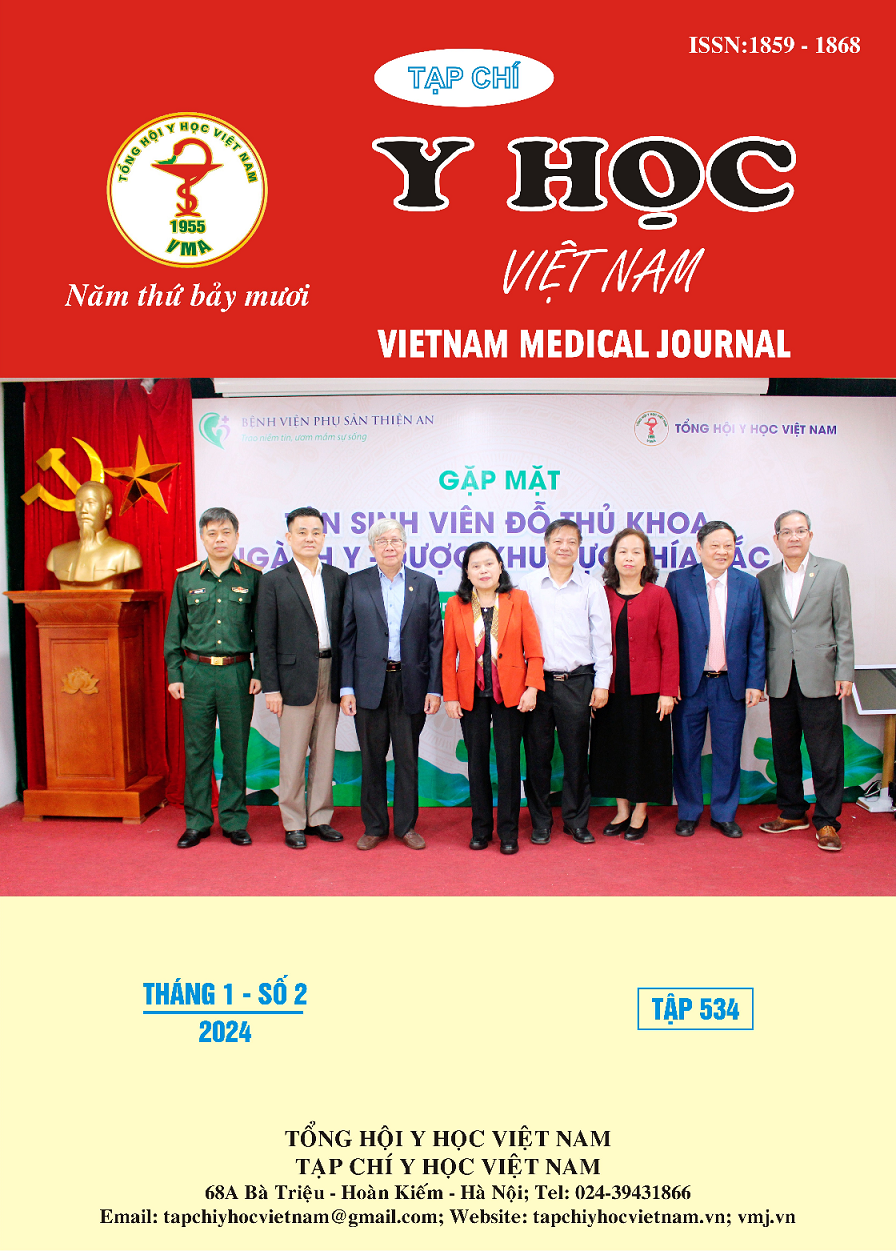THE RELATIONSHIP BETWEEN IMAGE-ENHANCED ENDOSCOPY FINDINGS AND HISTOPATHOLOGICAL RESULTS OF DYSPLASTIC LESIONS AND EARLY-STAGE ESOPHAGEAL SQUAMOUS CELL CARCINOMA
Main Article Content
Abstract
Objective: Compare image-enhanced endoscopy findings with histopathological results on dysplastic lesions and early-stage esophageal squamous cell carcinoma. Subject and method: A cross-sectional descriptive study, magnified stained endoscopic images (M-NBI, M-BLI) were divided into 4 types based on the morphology of intraepithelial capillary papillary loops (IPCL), patients were performed on endoscopic mucosal resection or endoscopic submucosal dissection, taking specimens for pathology, thereby comparing the endoscopic image characteristics with histopathological results, and evaluating the value of magnified stained endoscopy in diagnosing the depth of invasion of esophageal squamous cell carcinoma. Results: 52 lesions in 45 patients were included in the study from July 1, 2022, to September 30, 2023, of which 28 squamous cell carcinoma lesions accounted for 53.8%, 20 dysplastic lesions with high-grade squamous dysplasia accounted for 38.5%, and 4 low-grade squamous dysplasia lesions accounted for 7.7%. In the group of squamous cell carcinoma lesions, there were 15 type B1 lesions on magnified stained endoscopy, accounting for 53.6%, and 13 type B2 lesions, accounting for 46.4%. The accuracy of type B1 in diagnosing the depth of invasion of squamous cell carcinoma is 85.7%, the sensitivity is 82.4%, the specificity is 90.9%, the positive predictive value is 93. 3%, and the negative predictive value is 76.9%. The accuracy of type B2 is 82.1%, the sensitivity is 90%, the specificity is 77.8%, the positive predictive value is 69.2%, and the negative predictive value is 93.3%. Conclusion: Magnified stained endoscopy has high value in diagnosing the depth of invasion of esophageal squamous cell carcinoma.
Article Details
References
2. Codipilly D, Qin Y, Dawsey SM, et al (2018). Screening for Esophageal Squamous Cell Carcinoma: Recent Advances. Gastrointest Endosc. 88(3):413-426.
3. Phạm Bình Nguyên (2017). Nghiên Cứu Giá Trị Của Nội Soi Phóng Đại, Nhuộm Màu Trong Chẩn Đoán Polyp Đại Trực Tràng. Luận án Tiến sỹ y học.
4. Japan Esophageal Society (2017). Japanese Classification of Esophageal Cancer, 11th Edition: part I.
5. WHO. Classification of Tumors. Digestive System Tumours (2019), 5th Edition.
6. Park HC, Kim DH, Gong EJ, et al (2016). Ten-year experience of esophageal endoscopic submucosal dissection of superficial esophageal neoplasms in a single center. Korean J Intern Med. 31(6):1064-1072.
7. Oyama T, Inoue H, Arima M, et al (2017). Prediction of the invasion depth of superficial squamous cell carcinoma based on microvessel morphology: magnifying endoscopic classification of the Japan Esophageal Society. Esophagus. 14(2):105-112.
8. Kim SJ, Kim GH, Lee MW, et al (2017). New magnifying endoscopic classification for superficial esophageal squamous cell carcinoma. World J Gastroenterol. 23(24):4416-4421.


